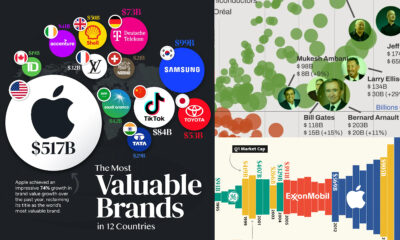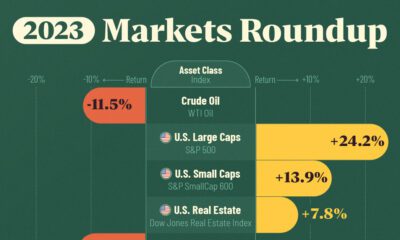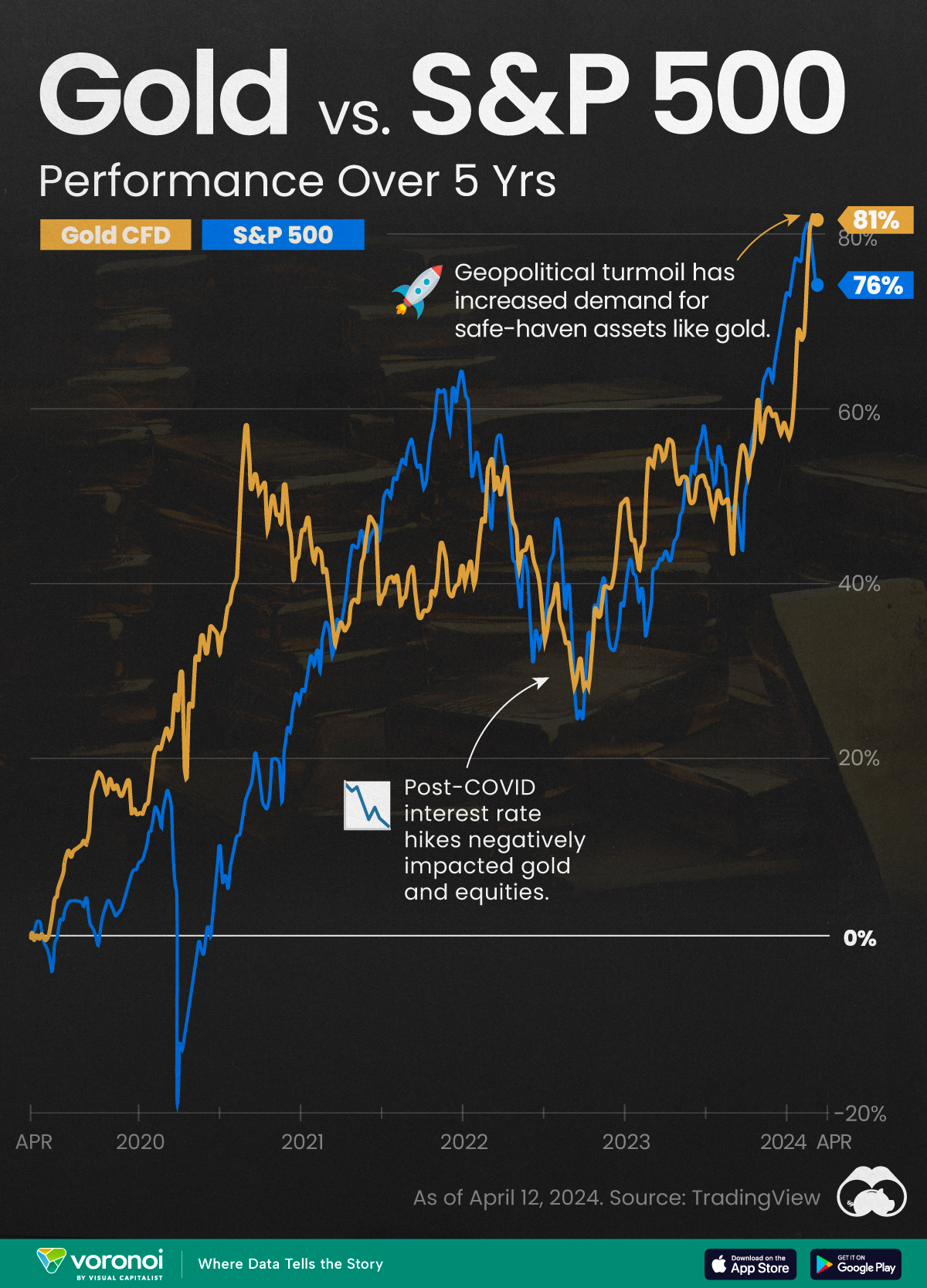Gold
Animation: How Billionaires are Preparing for the Next Bear Market
How Billionaires are Preparing for the Next Bear Market
No one likes to lose money, even if you have billions to spare.
It’s why the prospect of a bear market – a prolonged downturn which sees stock prices fall by at least 20% over two months or more – is something that keeps even the world’s most elite investors awake at night.
To hedge against this concern, the world’s billionaires use a variety of strategies and tactics to protect their wealth, including setting up their portfolios with specific asset allocations that can help soften any blow caused by an extended market downturn.
Protecting Wealth
Today’s animation comes to us from Sprott Physical Bullion Trusts and it highlights a strategy being used by billionaires ranging from Ray Dalio to John Tudor Jones II.
Because market sentiment can change so quickly in the market, these elite investors protect themselves by having diverse portfolios that include uncorrelated assets.
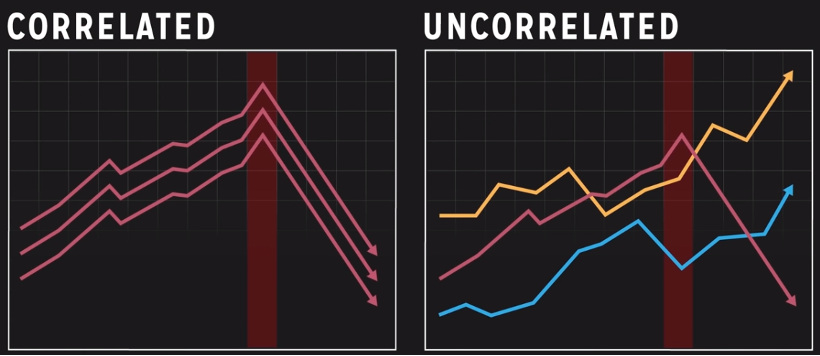
While this sounds complicated, uncorrelated assets are simply investments that don’t move up or down in the same direction as the other asset classes in the portfolio. A small allocation to these uncorrelated items can help protect the value of a portfolio when market sentiment changes.
The King of Uncorrelated Assets
What kind of asset classes can be used for this kind of purpose?
While options like real estate, commodities, and cash can contribute to a more diversified portfolio beyond traditional stocks and bonds, many experts say that gold is the undisputed king of uncorrelated assets.
The price of gold doesn’t usually doesn’t move with the wider stock market – and often, because of its history, the yellow metal can even increase in price during the course of a bear market.
Here are some of the reasons billionaires turn towards an allocation in gold:
- Gold has acted as a store of value for thousands of years
- Gold can lower the volatility of a portfolio
- Gold can act as a hedge against inflation in some scenarios
- Gold is a traditional safe haven asset that investors flock to when the market goes astray
Billionaire Actions
To kick off 2019, a new billionaire jumped onto the gold bandwagon – along with previous advocates such as Ray Dalio, David Einhorn, John Paulson, and John Tudor Jones II.
The newest entry to the club is Sam Zell, the pioneer behind real estate investment trusts (REITs). He bought gold for the first time in January, citing that it is “a good hedge” and that “supply is shrinking” as new mine discoveries dries up.
With market volatility back in the fray, it’ll be interesting to see how many more of the world’s elite investors also jump on the bandwagon.
Mining
Gold vs. S&P 500: Which Has Grown More Over Five Years?
The price of gold has set record highs in 2024, but how has this precious metal performed relative to the S&P 500?
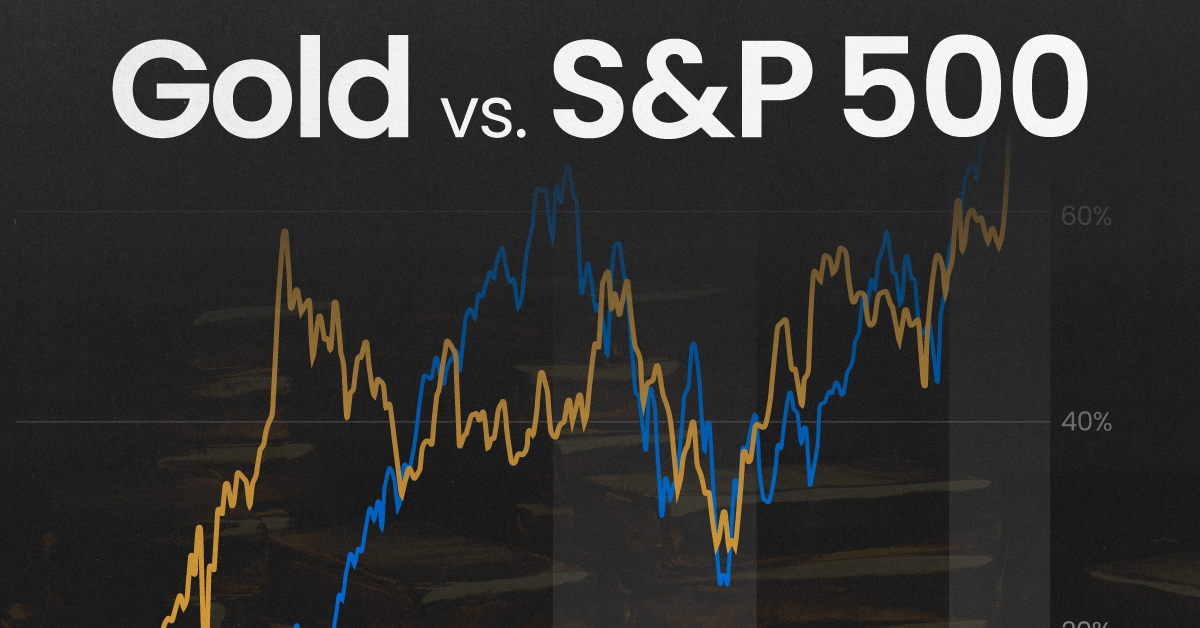
Gold vs. S&P 500: Which Has Grown More Over Five Years?
This was originally posted on our Voronoi app. Download the app for free on Apple or Android and discover incredible data-driven charts from a variety of trusted sources.
Gold is considered a unique asset due to its enduring value, historical significance, and application in various technologies like computers, spacecraft, and communications equipment.
Commonly regarded as a “safe haven asset”, gold is something investors typically buy to protect themselves during periods of global uncertainty and economic decline.
It is for this reason that gold has performed rather strongly in recent years, and especially in 2024. Persistent inflation combined with multiple wars has driven up demand for gold, helping it set a new all-time high of over $2,400 per ounce.
To put this into perspective, we visualized the performance of gold alongside the S&P 500. See the table below for performance figures as of April 12, 2024.
| Asset/Index | 1 Yr (%) | 5 Yr (%) |
|---|---|---|
| 🏆 Gold | +16.35 | +81.65 |
| 💼 S&P 500 | +25.21 | +76.22 |
Over the five-year period, gold has climbed an impressive 81.65%, outpacing even the S&P 500.
Get Your Gold at Costco
Perhaps a sign of how high the demand for gold is becoming, wholesale giant Costco is reportedly selling up to $200 million worth of gold bars every month in the United States. The year prior, sales only amounted to $100 million per quarter.
Consumers aren’t the only ones buying gold, either. Central banks around the world have been accumulating gold in very large quantities, likely as a hedge against inflation.
According to the World Gold Council, these institutions bought 1,136 metric tons in 2022, marking the highest level since 1950. Figures for 2023 came in at 1,037 metric tons.
See More Graphics on Gold
If you’re fascinated by gold, be sure to check out more Visual Capitalist content including 200 Years of Global Gold Production, by Country or Ranked: The Largest Gold Reserves by Country.
-

 Real Estate2 weeks ago
Real Estate2 weeks agoVisualizing America’s Shortage of Affordable Homes
-

 Technology1 week ago
Technology1 week agoRanked: Semiconductor Companies by Industry Revenue Share
-

 Money1 week ago
Money1 week agoWhich States Have the Highest Minimum Wage in America?
-

 Real Estate1 week ago
Real Estate1 week agoRanked: The Most Valuable Housing Markets in America
-

 Business2 weeks ago
Business2 weeks agoCharted: Big Four Market Share by S&P 500 Audits
-

 AI2 weeks ago
AI2 weeks agoThe Stock Performance of U.S. Chipmakers So Far in 2024
-

 Misc2 weeks ago
Misc2 weeks agoAlmost Every EV Stock is Down After Q1 2024
-

 Money2 weeks ago
Money2 weeks agoWhere Does One U.S. Tax Dollar Go?







